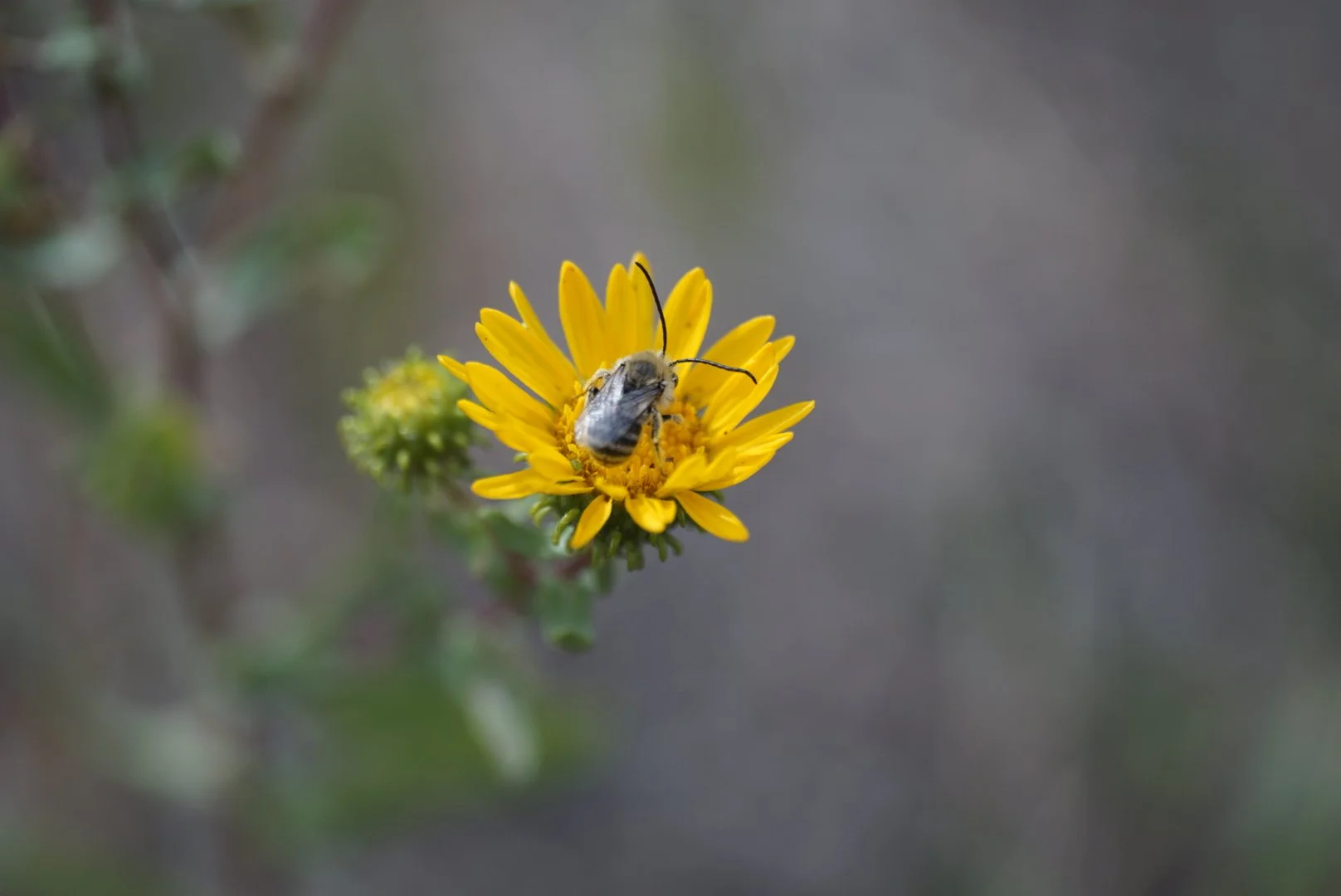Cyanotype: The Process
In seventh grade my teacher gave me a packet of cyanotype paper, and I’ve been fascinated by taking photos with the sun since. As lead worker bee at Bee Regenerative, a grassroots nonprofit centered on bee habitat conservation through research, regeneration, art, and education, I spend the field season studying the relationship between bees, flowers, soil, livestock, wildlife, and people.
Always contemplating methods to creatively bring people along with me - to understand and appreciate the value of bees and healthy flower-filled landscapes, I became I inspired to combine my love of cyanotype* prints with my observations.
Myself and the Bee Regenerative team have been observing and collecting bees on landscapes since 2017 with a goal to understand the potentially synergistic or mutualistic interactions between honey bees, native bees, livestock, wildlife by installing multi-year vegetation and pollinator monitoring areas at multiple properties for multiple years.
To learn more about the specific goals and intended outcomes of our projects visit these links: Coexistence & Bee Habitat Regeneration in the Greater Yellowstone Ecosystem, Bison and Bee Habitat, and Bee Friendly Vineyards.
An important part of the process is to identify the bees we’re observing and catching. After spending many hours peering at vein patterns on bee wings and markings on bee faces in the microscope – I enter data into spreadsheets for analysis, and the bees are “pinned” in an entomological collection.
I thought there could be a more engaging way to show off these bees, in addition to a classic entomological collection. So, I started gathering and pressing flowers from our projects. After the flowers are preserved, I take photos of them using the sun.
This is a process called cyanotype, a slow-reacting photographic printing process. I mix ferric ammonium citrate and potassium ferricyanide together (chemicals sensitive to UVA radiation) and paint the liquid onto cold-pressed watercolor paper. After it dries, I lay the pressed flowers over a chemically treated page and then lay the composition in the bright mid-day sun.
When the paper is exposed to the sunlight it produces a cyan-blue stain, yet the shadow of the flower remains white. I fix the piece with a simple cold water bath, and hang to dry.
The final steps are to match the flower from the print to a bee (or bees) from our collection that pollinates the flower. I’m constantly thinking of methods to incorporate these bees into the pieces with their flowers, but typically - I pin bees from our collection to the flower prints and embellish the bee wings with gold leaf and speckle the prints with gold “pollen” to signify beauty, value, and connection.
The prints are then framed with reclaimed barn wood (which is collected and made in the US), to tie the piece back to agriculture – where we work to to advance regenerative agriculture, pollinator conservation, and climate resilience.
Click here for photos and videos on my Instagram stories of the work and process.
Click here to find where connect with myself and the Bee Regenerative team at an upcoming artist talk or exhibition.
*Cyanotype was discovered in 1842, and popularized by artist and botanist Anna Atkins, often considered the first female photographer.








